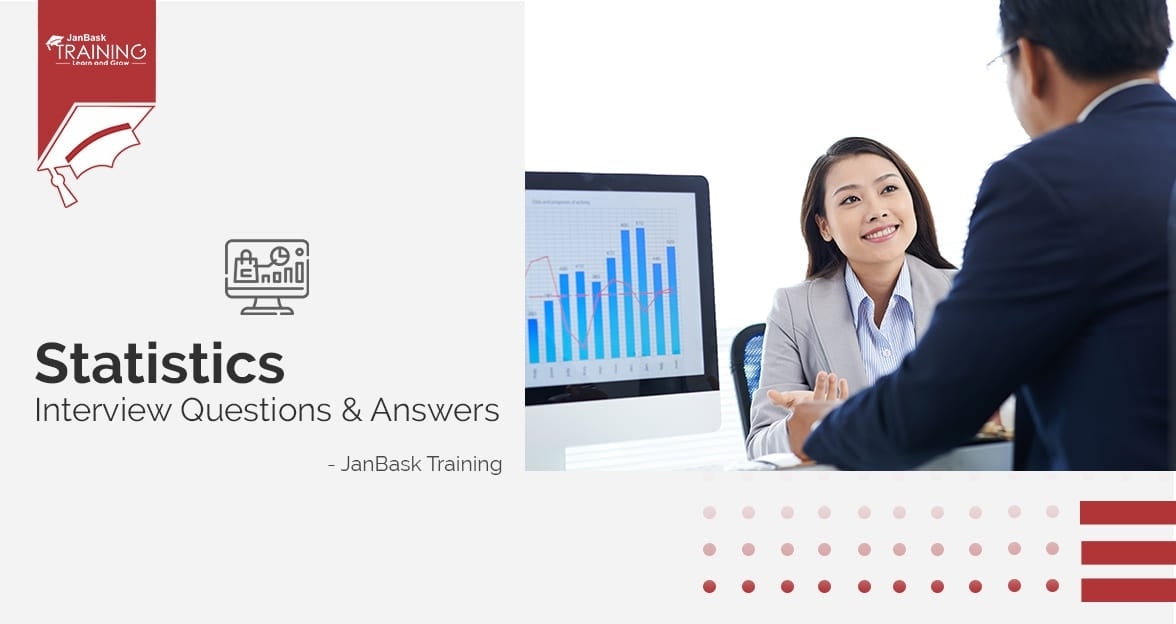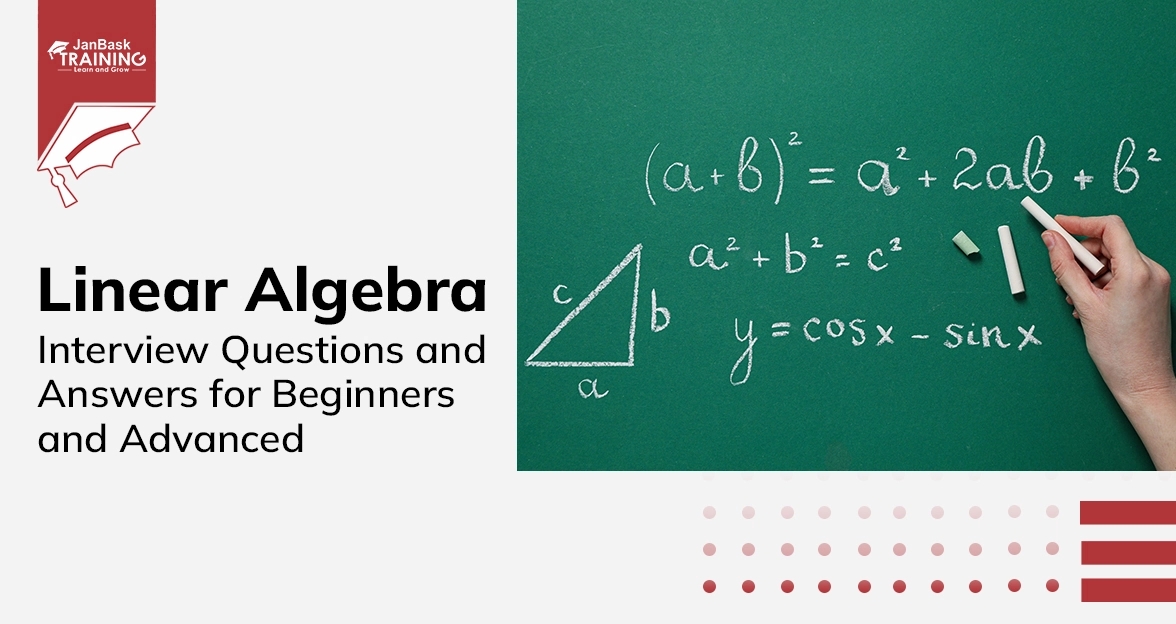 Grab Deal : Upto 30% off on live classes + 2 free self-paced courses - SCHEDULE CALL
Grab Deal : Upto 30% off on live classes + 2 free self-paced courses - SCHEDULE CALL

 Grab Deal : Upto 30% off on live classes + 2 free self-paced courses - SCHEDULE CALL
Grab Deal : Upto 30% off on live classes + 2 free self-paced courses - SCHEDULE CALL

Data visualization is one of the most critical steps in a Data Science process. It helps transform complex data into appealing visuals, which helps in easy data comprehension and ultimately helps in decision-making. Data science is one of the most competitive career fields, and being highly well-versed in data visualization know-how is essential. If you are also someone preparing to enter the data science job market, it is crucial that you lay the groundwork and prepare the necessary interview questions.
Together, let us explore some potential data visualization interview questions with answers in this blog.
Ans: Data Visualization makes complex data easy to understand and comprehend with the help of visuals such as images, charts, etc. In data science, it helps in exploratory data analysis, error detection, and communication of results. But, with data visualization, you can easily understand the data, identify any issues in the analysis, and effectively convey the results to others. In data science, data visualization also lets us understand the more profound insights, such as patterns, trends, correlations, and outliers, which might not be apparent in raw data.
Ans: Some best practices of visualization include:
Ans: In data science, you can use a wide range of charts for data visualization, and each type has its specific use case and best practices:
Ans: Choosing the proper visualization involves understanding the story the data is trying to tell. If you clearly understand the nature of your data and what it conveys, you can easily decide what type of visualization best works for your data. You must also be clear about the goals you want to achieve from that data visualization. Another critical element to note while choosing the data visualization type is to know your audience well and ensure that you use the medium your audience understands best.
Ans: Chartjunk is the unneeded design feature of data visualizations that do not provide clarity or enhance its meaning. It may include bright colors, thick grids, and other fancies that distract from the data. Chart junk in any data visualization must be minimized because it makes understanding difficult. Clean, clear, and straightforward visualizations allow readers to comprehend the insights within a short time frame. More precise visualizations, which reduce clutter for emphasis on data, enable understanding and informed decision-making. Effectively, chartjunk reduction makes it possible to concentrate on critical data and not on extra noise.
Ans: When visualizing data in tables, using these best practices effectively tells the story your data is trying to tell.
Ans: Data visualization scaling and labeling are significant for accuracy, clarity, and understanding. This guarantees that what is appropriately visualized reflects the data and can be understood by the observer. Scale the data so that it is all presented at the same level. Also, this method ensures that visualization has similarities across all parts, leading to accurate audience understanding and highlighting the patterns, trends, and other relationships. Labeling adds context to the visualization, shedding more light on the entire data set.
Ans: Two other essential forms of data visualization include dot and line plots. They facilitate the examination of various trends between two variables or within a specific period. The dot plot is very good at showing data distributions, whereas a line plot will help show how things change with time. Each of these plots provides an insight into the general characteristics such as trends, patterns, and possible outliers within the data, thus enabling one to discern helpful information and make sense of conclusions. Dot and line plots remain fundamental in revealing patterns and unraveling the intricacies of highly composite information sets, so their use is indispensable among anyone whose task entails understanding vast amounts of data.
Ans: Scatter plots are a very efficient tool for graphically capturing the links between two variables. They make it possible to identify correlations, clusterings, and outliers in an exploratory data analysis, thus being very useful. Scatter plots depict data points as visuals to show hidden relationships between these points that cannot be seen in plain figures. Also, one can customize a scatter plot that enables them to develop various designs to meet different needs.
Ans: The representation of data in a manner that can be understood easily lies in its visual representation. Some widespread examples of bar graphs are bar plots and pie charts that can be utilized for making such comparisons and demonstrating percentages. In this respect, bar plots work very well for finding out the differences in values of categories as each bar indicates its size. A pie chart, however, shows the relative proportions among different categories, whereby each section shows a percentage of the whole. Graphic representations are ubiquitous in industry, economy, sciences, and learning.
Ans: A histogram is a typical graphical illustration of a data set's distribution. These are critical in understanding the contours of a data distribution whereby we can detect different qualities like skewness, crests, etc. Visualizing of spread and central tendencies using histograms, the latter showing possible patterns/trends. Histogram analysis helps in knowing about the underlying distribution of a data set, which can come in handy for data analysis, statistics, and machine learning.
Ans: Visual representations such as "data maps" have been established for geographical data presentation purposes. These maps effectively show how the data changes spatially so that a geographic comparison can be made among the areas involved and spatial analysis can be done. With data maps, researchers and analysts get more insights into the varying impacts of things like a high population density or low socioeconomic status on specific regions. Moreover, data maps can help spot patterns and trends not readily visible in bulk data, providing direction for policy-making and decision-making. Data maps constitute an indispensable instrument for anybody wishing to comprehend the intersection of geography and data.
Ans: Data visualizations are commonly represented using repeated graphics sets with nearly identical designs containing various related information. Such visualization helps compare multiple sets and quickly identify trends, patterns, or outliers. Repetition creates new meaning from even the most complex data, allowing viewers to see critical and significant data easily.
Ans: Interactive exploration widgets stand out as one of the top approaches for improving data visualization. Such widgets allow for real-time interaction with the data and dynamic exploration. Interactive widgets allow users to filter, zoom, or change perspective, which uncovers additional insight that is not clear initially with static visualization. For instance, it is easy for users to discern patterns, trends, and outliers and examine alternative scenarios to understand the data better. Users can test multiple factors against the available data through interactive exploration widgets to arrive at more educated decisions. In short, integrating interactive exploration widgets for data visualization will significantly improve user experience and provide more substantial meanings.
Data Science Training - Using R and Python

Data visualization is crucial in data science for understanding complex data sets. This makes mastering the skill of data visualization equally crucial for a successful career in Data Science. To be adept in data visualization, one must be constantly updated with the latest trends, tools, techniques, and approaches. Whether you are an experienced professional or a fresher looking to make a career in Data Science, extra training and push can go a long way.
If you want that push, leap with an online masterclass in Data Science Certification Training at JanBask Training.
A course designed to transform you into a skilled data scientist with the proper understanding, skills, and certification top companies want. Want to boost your job and jump into the data science pool? Come with us, and open the door to an array of chances!

Statistics Interview Question and Answers


Data Warehouse Interview Question And Answers in 2024

Cyber Security

QA

Salesforce

Business Analyst

MS SQL Server

Data Science

DevOps

Hadoop

Python

Artificial Intelligence

Machine Learning

Tableau
Download Syllabus
Get Complete Course Syllabus
Enroll For Demo Class
It will take less than a minute
Tutorials
Interviews
You must be logged in to post a comment